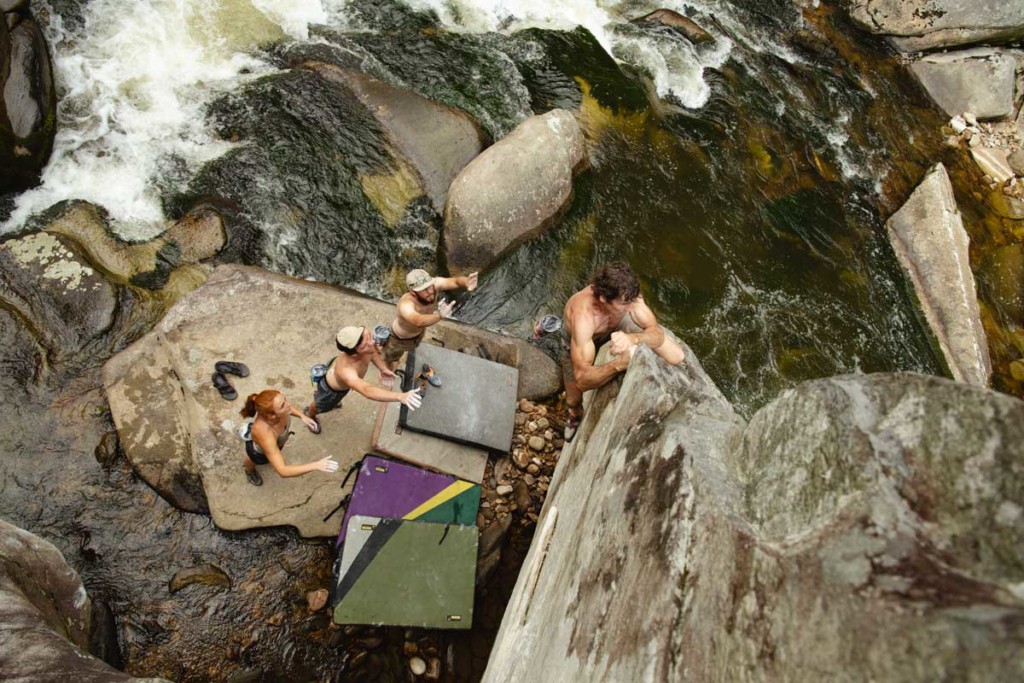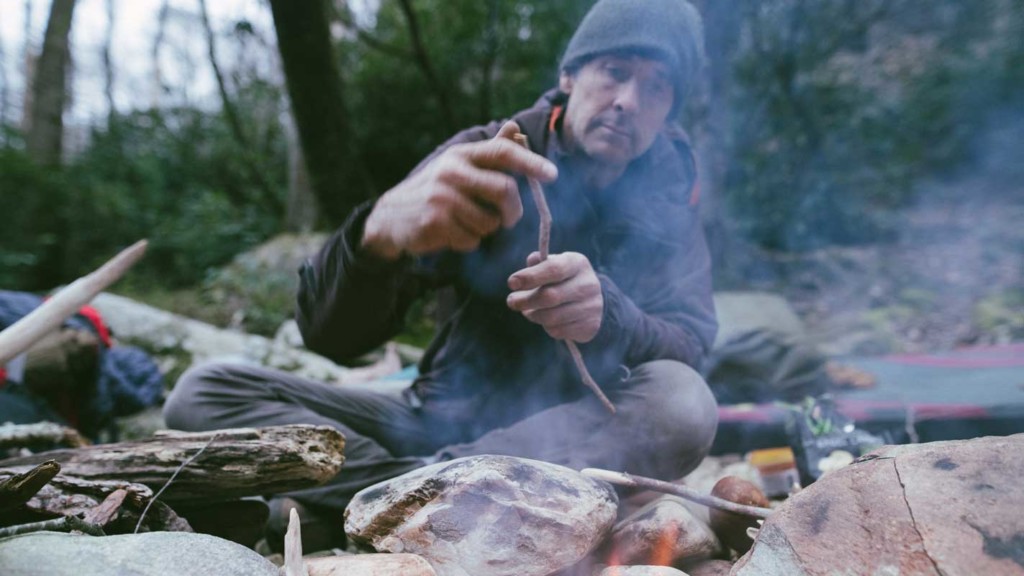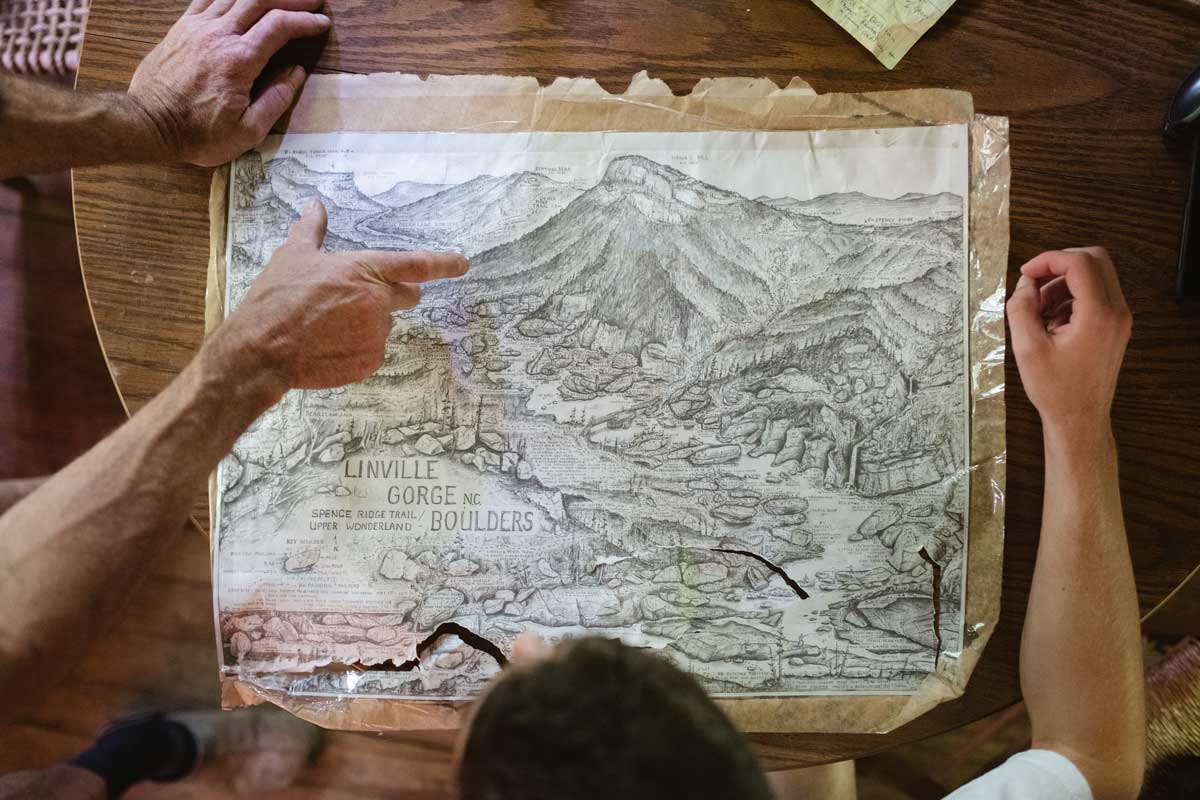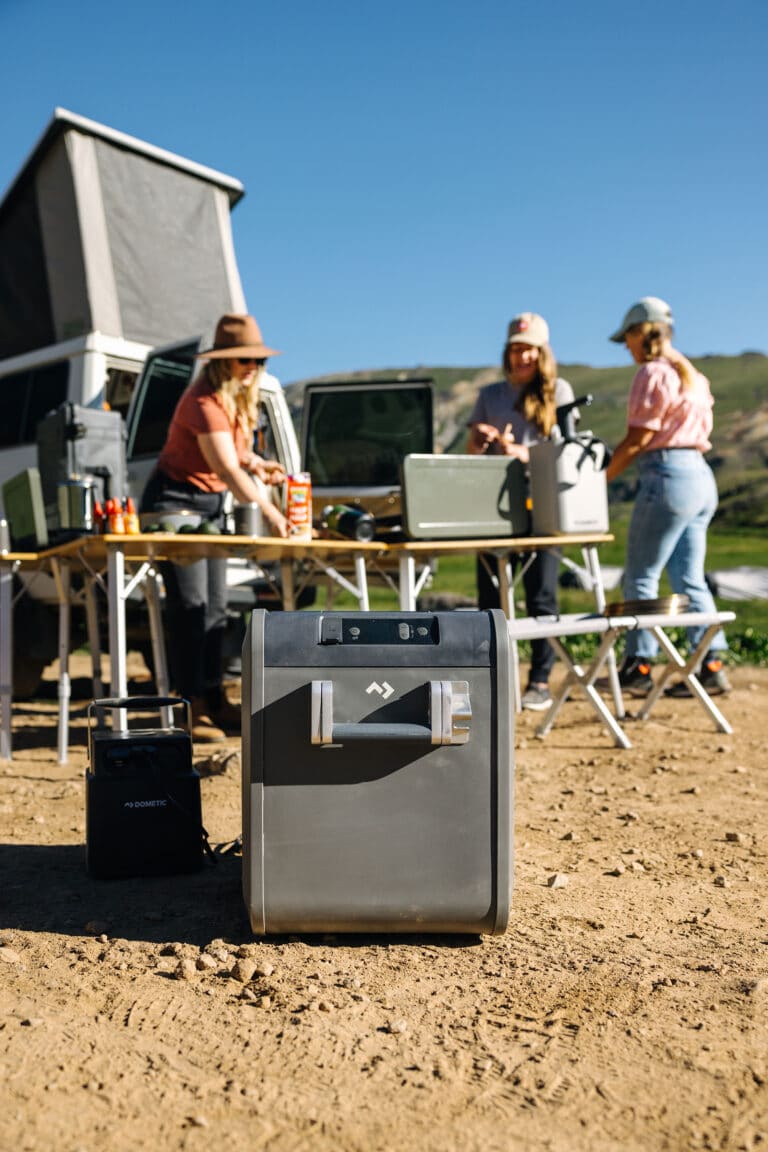Photo by: Andrew Kornylak
A commemorative, yet intrinsically detailed guide to Boone’s rocky playground. Some may call his designs a work of art, others may simply conclude that they are his tribute to the beauty of the landscape and the rock climbing central he calls home. His name is Joey Henson.
Joey is a rock climber who was recently featured in a film created by the U.S. National Whitewater Center called “The Mapmaker”, directed by Andrew Kornylak and Carlo Nasisse, and produced by Cooper Lambla. The directors manage to capture Joey’s true ethos throughout the entire film in the ways of subtle yet intimate camera angles focusing on his work and while emphasizing scenes of Joey’s close friendships. Joey is not just an athlete of the outdoors, but a mentor, teacher, creative, and an inspiring environmentalist of the Blue Ridge community.
Joey takes refuge in the throws of Boone’s Appalachian mountains where he spends his time living and breathing rock climbing. After a long day of climbing Joey ventures back to his humble abode complete with a retired school bus that can easily be converted into an extra living space for fellow climbers. Despite a full day of bouldering and fellowship with other eager local climbers, Joey manages to find time to draw up a map of the layout of the formations and extensive tree groves and babbling brooks. Not only is the land special to Joey, but he communicates his knowledge of the landscapes in sort of conservation of the land.

On a large swath of smooth paper, Joey fashions a beautiful representation of the day’s climbing locations. The drawings take into account the twists and turns of the mountainous terrain while boasting a picture that is cradled in shading, labels, and dotted lines swimming across the paper to identify the major boulders and landmarks of the area. Each map pulls your eyes onto the page and you feel as if you are already familiar with every region Joey has climbed. Just by listening to Joey describe his maps and to witness them yourself, you can feel the respect that Joey exudes for the places he climbs and finds comfort. His maps preserve the sacredness of the mountains while inviting others to share the same token so that they too can experience the love of the land while helping to take care of its beauty and vitality. Artist or conservationist, Joey blends the two.
Something about Joey whispers mentor or father figure to the young adventurers that accompany him. Hospitable may be an understatement to describe Joey’s willingness to open up his place and offer a sanctuary to those who need a little love. With somewhat of a rugged outdoorsman persona, Joey’s soft gravely voice manages to reveal a tender heart underneath the gruff outer layers of his lifestyle. You see Joey’s heart as he stands below the other climbers, arms outstretched, whispering gentle encouragements and promising to catch them if they fall. All of these things shine a light on who Joey is as a person and how he not only values the wildness that is his playground, but he tends to all those who come to join.
Blue Ridge Outdoors recently sat down with the creators of “The Mapmaker”, Andrew and Carlo, and Cooper, to dive deep into their thoughts and intentions behind the film. The interview details their experiences with Joey and their relationship with outdoors, as well as what the team learned along the way and why they felt compelled to share Joey’s story. For those who are curious, you can find the film on the Whitewater Youtube page or visit their website at www.usnwc.org, to learn more.

1.) How did you find Joey?
Andrew: I first met Joey at Hound Ears and/or bouldering in the Boone area probably around 1996 when I first moved to the Southeast. I’d run into him off and on, usually in the context of filming other top climbers in the South, but he keeps a pretty low profile. I spent some time at his boulder field and barn while making a short film for prAna around 2012. It wasn’t until 2014 that I even was able to take a picture of him, partly because I was too intimidated and partially because he very much keeps to himself and avoids photography or publicity about himself. But after that, I felt we had made a connection. This spring a writer from the magazine Our State contacted him to do a climbing story for their Linville Gorge issue. Apparently Joey was hesitant at first. When she mentioned I might be asked to photograph it, Joey’s reluctance to be involved turned to enthusiasm. I had been wanting to interview him for a potential film and felt like that was an opening. I talked the idea over with Carlo Nasisse, a great friend and lifelong climber from these parts whose filmmaking I admire, and then we floated the idea with Joey, who agreed.
2.) What made you decide that this story was worth sharing?
Andrew: Joey is someone who lives on the outside of things. At the same time, he’s been deeply involved in the climbing scene, not just around Boone, but in the wider world, going back to the very origins of bouldering as its own discipline of climbing, the rating systems, activism to preserve climbing areas, everything. Most of his story has not been told, so I think that’s interesting from an entertaining, storytelling perspective, but more importantly, the questions of community and secrecy and preservation that Joey has wrestled with his whole life are still just as relevant to younger climbers today, and they need perspective.
Carlo: I admire Joey as someone who feels deeply and doesn’t hesitate to mold his life around his beliefs, even when they fall outside of societal conventions. People like him are important because they illuminate blind spots in society, things we all take for granted as normal but when looked at through a different lens are actually harmful to ourselves and the earth. He is also a wicked strong climber, mentor, and makes a mean curry.
Cooper: There are so many humble pioneers woven into the fabric and history of outdoor adventure. It’s an honor and privilege to share a story like Joey’s.
3.) How would you describe the overall experience of creating this film?
Andrew: As all films are, it was a lot of work! But I’m very happy with the results. The Whitewater Center is unique for the love and resources they have to put toward adventure films. Cooper is himself a veteran storyteller of his own far-flung adventures. To have that understanding of filmmaking makes him a great partner in producing a film like this!
Carlo: It was… special. Andrew and I fell into the rhythm of life at Joey’s home and within the boulder fields. Some of our favorite moments of the film came from this type of deep hanging out. Everyone was so present- focused on climbing, cooking, or sleeping.
Cooper: Andrew and Carlo are some of the best in the game when it comes to visual storytelling. We’ve worked together on projects for Whitewater for years, so to team up on a story as unique as Joey’s was a dream come true.
4.) Do you or your perspective on conservation, climbing, or way of life change after creating this film?
Andrew: I am only more obsessed with climbing now, and only more in awe of people who can really live their lives the way they want to.
Carlo: Joey taught me a lot about climbing. Just watching him touch rocks was kind of a zen experience. I think it showed me the benefits of intention and being present while climbing.
Cooper: It all comes back to engagement. Joey is engaged in his passion for climbing, his surrounding environment, and his community. The world could use more people that invested, involved, and engaged in whatever they are passionate about.
5.) What is your favorite way to experience the outdoors?
Andrew: Climbing and hiking is my main thing, I think you can see a lot of terrain that way. Climbing is unique in that there are still vast areas of untouched rock to explore, on the other side of the world and in the next valley over.
Carlo: Climbing rocks has been a lifelong passion. It showed me the outdoors when I was young and continues to introduce me to new places and people.
Cooper: I’ve always been drawn to the mountains, but I’m typically most content on a river or on singletrack.








